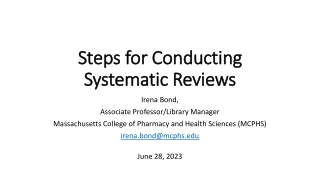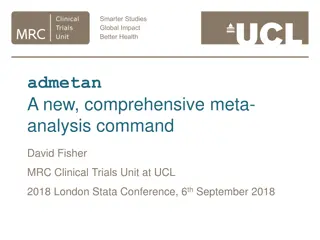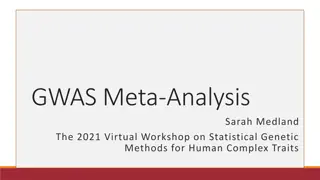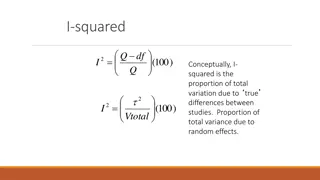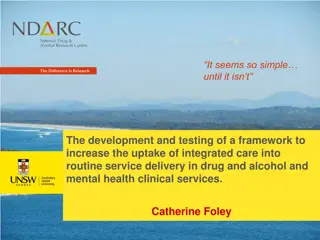Understanding Systematic Reviews, Meta-analysis, and Clinical Practice Guidelines
Explore the importance of systematic reviews, critical appraisal questions, meta-analysis, and clinical practice guidelines in the healthcare field. Learn about the process of appraising systematic reviews, the significance of meta-analysis, and the benefits of following clinical practice guidelines for evidence-based practice.
Download Presentation

Please find below an Image/Link to download the presentation.
The content on the website is provided AS IS for your information and personal use only. It may not be sold, licensed, or shared on other websites without obtaining consent from the author. Download presentation by click this link. If you encounter any issues during the download, it is possible that the publisher has removed the file from their server.
E N D
Presentation Transcript
Systematic Review and Clinical Practice Guidelines
Questions to Ask in a Critical Appraisal Why was the study done? What is the sample size? Are measurements reliable and valid? How were the data analyzed? Did any untoward event happen during the study? How do the findings fit with previous research? What does this mean for practice?
Appraising Systematic Reviews Systematic reviews - compilation of similar studies that address a specific clinical question Not the same as a literature review or narrative review Process used to conduct review should be explicit Detailed description Databases accessed Search strategies Search terms
Appraising Systematic Reviews Should inform clinicians about how data were extracted from the individual studies Should provide an overview of the evaluation of the included studies Meta-analysis A statistical approach to synthesizing the results of two or more studies A relatively new methodology that has become a hallmark of EBP As with all methodologies, applicability must be considered
Self-Check True or false Conducting a Meta-analysis results in evidence that is applicable to a larger patient population than an individual study
Answer False In meta-analyses, combining the results of several studies produces a larger sample size and thus greater power to accurately determine the magnitude of the effect. This does not, however, increase the size of the relevant patient population.
Clinical Practice Guidelines (CPGs) Systematically developed statements based on the best available evidence CPGs address regional differences in the diagnosis, treatment, and management of patients Accessing and synthesizing individual pieces of evidence can be time-consuming and overwhelming CPGs are a time-effective and accessible source of evidence to guide practice
CPGs as Tools CPGs make finite recommendations for practice while still allowing the flexibility for situation- specific considerations Evidence-based practice guidelines (EBPGs) can help bridge the gap between published scientific evidence and clinical decision making However, the rigor of guidelines varies significantly
Self-Check True or false CPGs are a valid guide to practice because they encompass not only research evidence, but also patient preferences and clinical expertise.
Answer False Rationale: CPGs are based on the best available evidence, but it is the responsibility of the individual clinician to integrate patient preferences and clinical expertise into consideration when planning care.
Finding the Right Guideline Locating and reviewing current guidelines on a particular subject is often overwhelming CPG should specify information such as: Who developed and funded it Who was on the panel How the guideline was developed What dates the literature review covered
Finding the Right Guideline Need to keep in mind that one size does not fit all Assess their application to the right person at the right time and in the right way Ask What are the guideline recommendations? Are the guideline recommendations valid? How useful are the recommendations?
Reading Guidelines Recommendations should be as unambiguous as possible Consider the developers values Should specify the process used to systematically search and review the evidence that underlies the guideline Evidence should be graded using a recognized format Recommendations themselves should be graded Consider whether a particular guideline will help your patients
Question True or false. A valid, reliable, and applicable clinical practice guideline becomes a permanent component of the healthcare literature.
Answer False Rationale: Because a body of evidence is constantly growing and changing, CPGs cannot be considered static documents. Regular reviews and changes are necessary.
Developing Guidelines A CPG is indicated when: The topic is clinically important The topic is complex and requires clarity There is evidence of a gap between actual and optimal care There are no existing valid or relevant guidelines available There is evidence available to support guideline development The topic is central to healthy public policy


